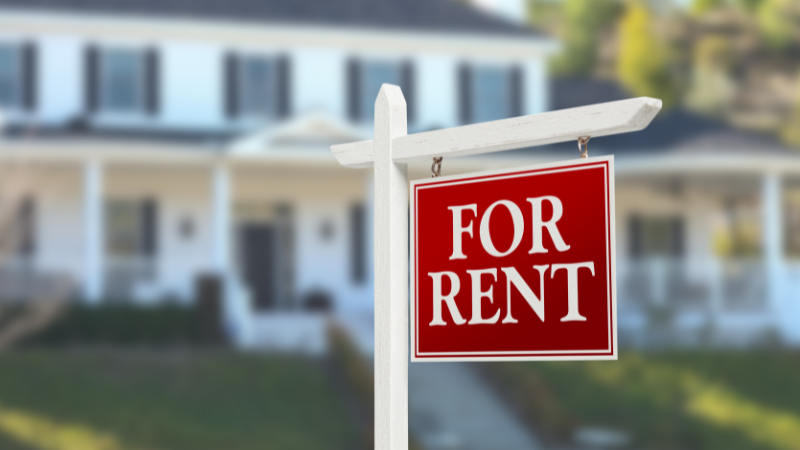
How to Find Your Dream Home, A Step-by-Step Guide
Finding your dream home is an exciting and often life-changing journey. Whether you're a first-time homebuyer or looking to upgrade to your forever home, the process can be both thrilling and overwhelming.
To help you navigate this important decision, we've created a step-by-step guide to finding your dream home.
Let’s get started with it!
Step 1: Define Your Budget
Before you start searching for your dream home, it's crucial to establish a budget. Consider your current financial situation, including your income, expenses, and any outstanding debts. Factor in your down payment, closing costs, and potential monthly mortgage payments. Having a clear budget in mind will help you focus your search on properties that are within your financial means.
Step 2: Determine Your Needs and Wants
Make a list of your must-haves and nice-to-haves. Must-haves could include the number of bedrooms and bathrooms, location, school district, and proximity to work or family. Nice-to-haves might encompass features like a backyard, a swimming pool, or a walk-in closet. This list will serve as a guideline during your home search.
Step 3: Choose the Right Location
Location is a critical factor in finding your dream home. Consider factors such as commute times, access to amenities like schools, parks, and shopping centers, and the overall vibe of the neighbourhood . Take the time to explore different areas and get a feel for the communities that align with your lifestyle and preferences.
Step 4: Work with a Real Estate Agent
Partnering with a reputable real estate agent can make a world of difference in your home search. An experienced agent can help you navigate the market, provide valuable insights, and assist with negotiations. They have access to listings that may not be readily available to the public and can save you time and effort.
Step 5: Start Your Search
Now comes the fun part – searching for your dream home! Use online real estate platforms, attend open houses, and take virtual tours to explore properties that match your criteria. Be patient and keep an open mind during this phase; it might take time to find the perfect fit.
Step 6: Attend Open Houses
Open houses provide an invaluable opportunity to immerse yourself in the potential homes on your list. Here's how to make the most of your open house visits:
a. Plan Your Schedule: Start by creating a schedule for open house visits. Note the date, time, and location of each open house, ensuring they fit into your availability. This will help you efficiently manage your time and explore as many properties as possible.
b. Ask Questions: Come prepared with a list of questions for the listing agent or seller. These questions might include inquiries about the property's history, recent renovations, utility costs, and the neighbourhood . By engaging in meaningful conversations, you can gain deeper insights into whether the home aligns with your needs and expectations.
c. Take Detailed Notes: Bring a notebook or use a note-taking app to jot down your impressions of each property. Note the pros and cons, your likes and dislikes, and any standout features. Capture your immediate reactions and feelings to help you recall the details later when comparing properties.
d. Visualize Your Lifestyle: Walk through each open house with your lifestyle in mind. Imagine how you'd use the space, where your furniture would go, and how the layout fits your daily routines. This exercise can help you assess the practicality and livability of the home.
e. Check for Red Flags: Pay close attention to potential red flags during your open house visits. Look for signs of water damage, structural issues, or neglected maintenance. Ask about any known issues and how they have been addressed.
Step 7: Evaluate and Compare Properties
After attending multiple open houses, it's time to methodically evaluate and compare the properties you've seen. Here's how to approach this critical step
a. Review Your Notes: Go through the notes you took during each open house visit. Consider the key features, conditions, and overall feeling of each property. Compare how well they align with your must-haves and nice-to-haves.
b. Create a Pros and Cons List: Compile a list of pros and cons for each property you've visited. This can be a handy visual tool for weighing the attributes of one home against another. Prioritize your needs and wants to determine which aspects are non-negotiable and which are more flexible.
c. Assess neighbourhoods: Don't forget to evaluate the neighbourhoods in which these properties are located. Consider factors such as safety, schools, proximity to work or family, and overall appeal. The neighbourhood plays a significant role in your overall satisfaction with your new home.
d. Seek Your Real Estate Agent's Input: Lean on your real estate agent's expertise during this stage. They can offer valuable insights and guidance based on their knowledge of the local market and your specific preferences.
e. Revisit Your Budget: Ensure that the properties you're considering align with your established budget. Calculate not only the purchase price but also potential monthly expenses like property taxes, insurance, and maintenance costs.
f. Narrow Down Your Choices: With a clear understanding of each property's strengths and weaknesses, start narrowing down your choices. Focus on the homes that best match your criteria and offer the potential for you to achieve your dream lifestyle.
By attending open houses and carefully evaluating and comparing properties, you'll be well-equipped to make an informed decision when the time comes to make an offer. This thorough approach reduces the chances of buyer's remorse and increases the likelihood of finding your true dream home.
Step 8: Make an Offer
Once you find a property that checks most of your boxes, it's time to make an offer. Your real estate agent will help you draft a competitive offer that takes into account market conditions and the property's value. Be prepared for negotiations with the seller, and stay flexible throughout this process.
Step 9: Home Inspection and Due Diligence
After your offer is accepted, it's essential to conduct a thorough home inspection. A professional inspector will assess the property's condition and provide a report with any issues that need attention. Use this information to negotiate repairs or adjustments to the sale price if necessary.
Step 10: Secure Financing
Work closely with your lender to secure your mortgage financing. Provide all necessary documentation promptly and keep communication open to ensure a smooth closing process.
Step 11: Close the Deal
Finally, it's time to close the deal. Sign all necessary paperwork, make your down payment, and take ownership of your dream home. Celebrate this significant milestone in your life!
Step 12: Move In and Make It Your Own
Once you have the keys to your new home, it's time to move in and start making it your own. Personalize the space, decorate, and create an atmosphere that truly reflects your vision of a dream home.
Conclusion
Remember that finding your dream home is a process that requires patience, careful consideration, and expert guidance. Be prepared to make compromises if necessary, but always keep your must-haves in mind. With the right approach and a dedicated team of professionals, you can turn your dream of homeownership into a reality.
Related Post

Ultimate Guide to Renting Property in Dubai: Tips & Insights
The Complete Guide to Renting Property in Dubai Renting in Dubai... Read More

Exploring Dubai's Diverse Property Types: A Comprehensive Guide
Dubai Property Types: Exploring the Different Options Available Dubai, a city... Read More

Dubai Houses: Discover Your Ideal Home
Real estate, in today’s times, is a thriving market. Investing... Read More



